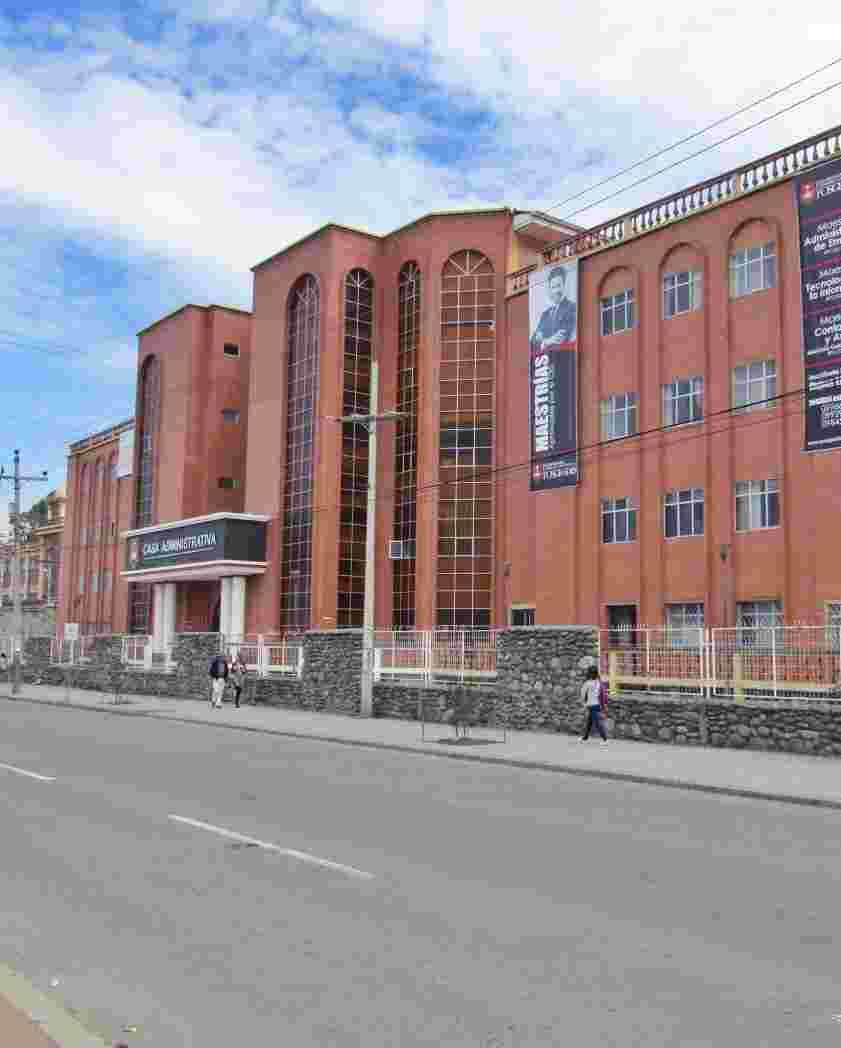Arquitectura
URI permanente para esta comunidadhttps://dspace.ucacue.edu.ec/handle/ucacue/35
Examinar
Examinando Arquitectura por Asesores "Avila Calle, Marco Benigno"
Mostrando 1 - 5 de 5
- Resultados por página
- Opciones de ordenación
Ítem Acceso Abierto Proyecto de Titulación embargado con fines de publicación de impacto(Universidad Católica de Cuenca., 2025) Cajamarca Sinchi, Danny Steven; Romero Pardo, Katherine Soledad; Avila Calle, Marco Benigno; 0105505846; 0106354723Ítem Acceso Abierto Proyecto de Titulación embargado con fines de publicación de impacto(Universidad Católica de Cuenca., 2025) Bacuilima Quinde, Stalin Mateo; Avila Calle, Marco Benigno; 0107183279Ítem Acceso Abierto Proyecto de Titulación embargado con fines de publicación de impacto(Universidad Católica de Cuenca., 2025) Sarmiento Paute, Sixto Joffre; Avila Calle, Marco Benigno; 0105248025Ítem Acceso Abierto Reinterpretación de la arquitectura Azteca en proyectos de vivienda contemporánea(Universidad Católica de Cuenca., 2025) Iñiguez Alvarez, Jacqueline Fabiola; Avila Calle, Marco Benigno; 0107079378This research addresses the reinterpretation of Aztec architecture in contemporary housing, highlighting the loss of identity elements in current Mexican architecture. Therefore, the objective is to develop design strategies inspired by Aztec architecture for application in contemporary projects. The methodology combines a qualitative approach with a comparative analysis of architectural references. It is structured in three stages: collecting information on Aztec architecture, analyzing case studies that have reinterpreted pre-Hispanic elements (Casa Zicatela, Casa Mérida, and Casa Morgan), and developing design strategies applied to a preliminary project. Additionally, artificial intelligence is incorporated to explore alternative futures and generate visual representations of hypothetical scenarios. The results include the identification of key design strategies, such as spatial hierarchy, vertical circulation, and the use of local materials. AI-generated images were also developed to show how Aztec architecture might have evolved in different historical contexts. Finally, the "Casa Tepohacayotl" is designed as a proposal that integrates these principles into a contemporary housing. It is concluded that Aztec architecture should not be considered a remnant of the past but rather a living source of inspiration for contemporary architecture. The research demonstrates that its reinterpretation is not only viable but also strengthens cultural identity in residential design, enabling a connection between the past and the present through innovative architectural strategies.Ítem Acceso Abierto Reinterpretación de la arquitectura Maya y Moche para generar estrategias de diseño de viviendas contemporáneas(Universidad Católica de Cuenca., 2025) Siguenza Bravo, Jhomara Alexandra; Freire Cabrera, Nicole Giomara; Avila Calle, Marco Benigno; 0107463416; 0930555925This research addresses the reinterpretation of Mayan and Moche architecture as a strategy for developing contemporary housing, considering the importance of rescuing and adapting ancestral knowledge that offers sustainable solutions and reinforces cultural identity in architectural design. Its relevance lies in the economic, social, and scientific impact of highlighting these civilizations' construction and organizational practices, demonstrating their applicability in the present day. The study identifies both cultures' historical milestones and architectural evolution, analyzing their construction patterns, spatial distribution, materials, and formal elements in domestic and monumental architecture. It also examines case studies of contemporary housing that reinterpret these traditions, evaluating their relationship with the environment, architectural concept, spatial composition, connectivity, materials, sustainability strategies, and cultural symbolism. Based on a prospective analysis, alternative future scenarios are constructed according to ten theories about the possible continuity of these civilizations, selecting those most consistent with their historical evolution and projecting their architectural and urban transformation through visual representations generated with artificial intelligence. As a result, design guidelines are formulated that integrate the spatial, material, and constructive principles of Mayan and Moche architecture into housing proposals adapted to contemporary needs without losing their cultural essence. The research demonstrates that the reinterpretation of pre-Columbian architectural principles allows for developing viable, sustainable, and culturally rooted strategies, fostering an architecture that balances tradition and innovation in contemporary housing.




